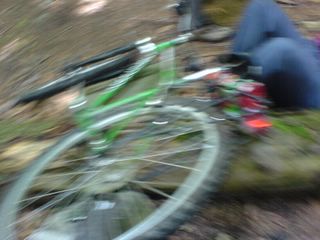I thought I'd read all the Discworld novels, but I was wrong (yay!). Maurice is tied in only loosely to the sprawling fantasy series (sorry, I know I should say 'epic', but series means the same thing. Really.) It would make an exceptionally good introduction to Pratchett's work (kid-friendly, natch).
The Amazing Maurice is a cat who can talk, think, and scam his way up a greased cliff. His educated rodents also talk (and use matches and write in squiggly pictures and have trap-defusing experts(and tap-dance)) and he's got the obligatory pipe-playing kid along as the essential human prop to the scam they're playing on local villages.
Q: How is it that talking rats and cats get along better than the non-talking variety?
A: They have an arrangement. Maurice is always very careful to check that he's not eating talking rodents.
Q: Why do cats and rats (even the talking kind) need money, anyhow?
A: To buy an island on which to found Rat Civilization.
In an interesting display of coincidence, this is the third treatment of fairy tale tropes I've read recently. First there was the Sisters Grimm , then Fables, and now I find Pratchett taking a swing at them. And frankly he does better than either. He twists the archetypes with the best of them, but gets much deeper on the issue of what story means and how stories shape our lives.
Recommended
Subscribe to:
Post Comments (Atom)

No comments:
Post a Comment